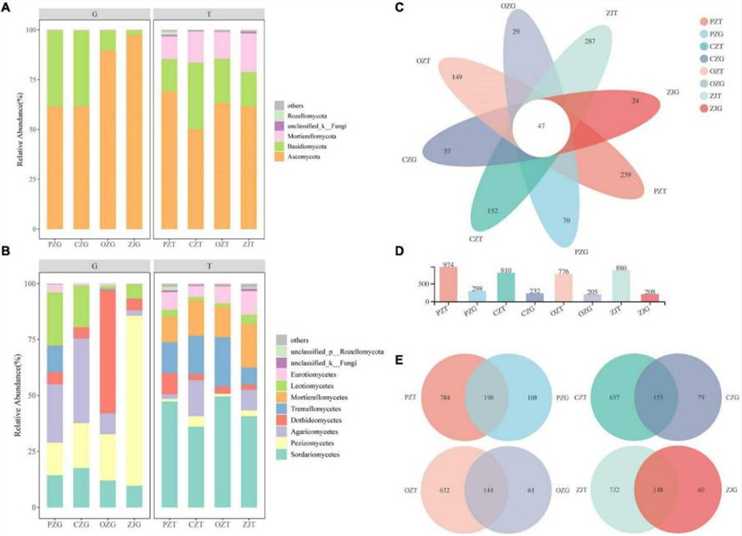Fungal community structure analysis is an essential part of fungal genome analysis. The composition of the fungal community is obtained by analyzing the composition of sequenced sequences. The analysis of differences in the composition of fungal communities in different environments can help us to explore the relationship between fungi and environmental factors or hosts and search for genes that are signature fungal communities or specific functions. Lifeasible can provide two methods for fungal community analysis. One is to analyze the composition and diversity of fungal communities by amplifying and sequencing large ribosomal subunits, small ribosomal subunits, and internally transcribed spacer regions. The other is macrogenome sequencing, where all fungal DNA is sequenced without isolating and culturing the fungus to analyze the fungal community composition and genetic composition and mine the genetic resources with application value.
 Figure 1. Schematic diagram of the results of fungal community analysis. (Ma W et al., 2021)
Figure 1. Schematic diagram of the results of fungal community analysis. (Ma W et al., 2021)
The specific services we can provide for fungal community structure analysis are as follows, including but not limited to:
Lifeasible can provide structural analysis of endophytic fungi, mycorrhizal fungi, and soil fungal communities based on amplicon sequencing technology. As your trusted partner, we can meet your fungal phylogenetic analysis needs and provide you with efficient, high-quality services. If you want to know the details, please contact us.
Reference
Lifeasible has established a one-stop service platform for plants. In addition to obtaining customized solutions for plant genetic engineering, customers can also conduct follow-up analysis and research on plants through our analysis platform. The analytical services we provide include but are not limited to the following:
STU-CRISPR System Improves Plant Genome Editing Efficiency
April 19, 2024
Application of Exosomes in Facial Beauty
April 12, 2024